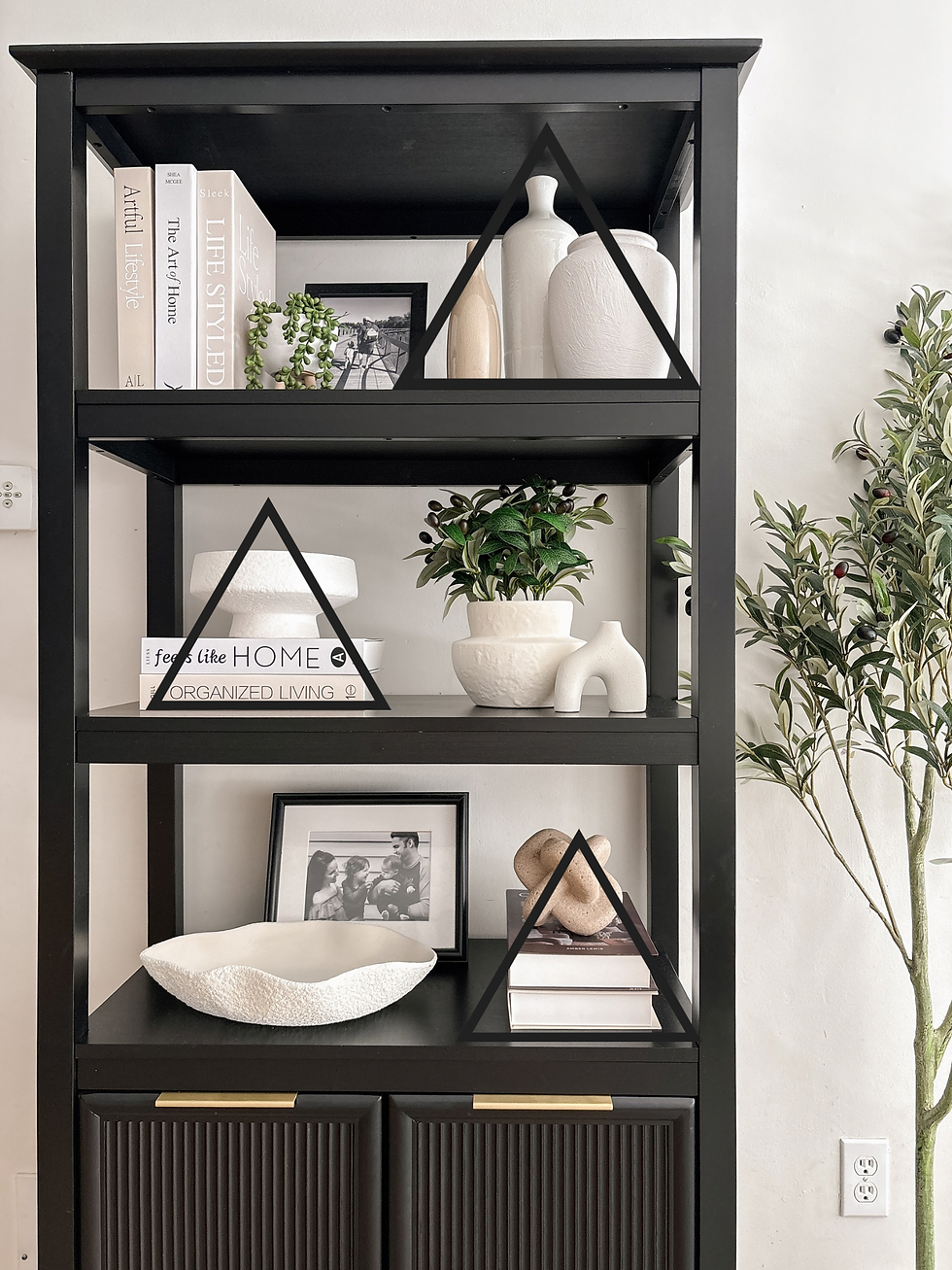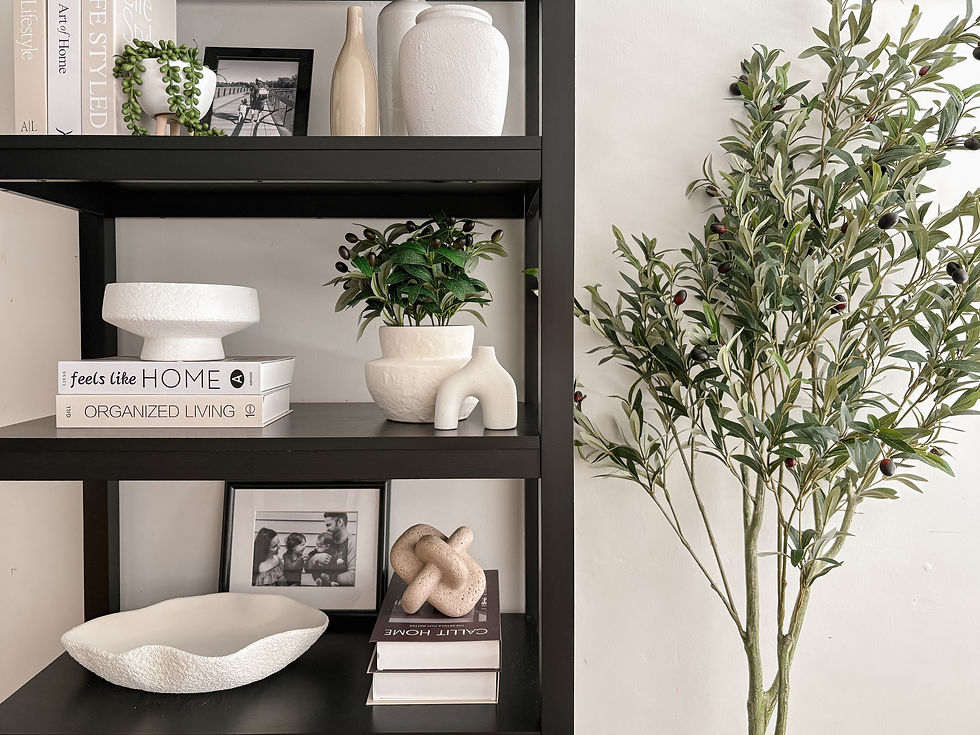Styling Your Bookshelf: Designer Tips featuring the Camille Bookshelf
- Sarah Ames

- Sep 8, 2025
- 3 min read
Bookshelves aren’t just for books, they’re a canvas for self-expression, storytelling, and style. Whether you're working with built-ins or a freestanding unit, the secret to a beautifully styled shelf lies in balance, texture, and intentionality. Here’s how to approach styling a bookshelf like a designer featuring the Camille Bookshelf by Bush Home.

The Triangle Theory: Your Secret Weapon for Visual Balance
One of the most effective design principles for shelf styling is the Triangle Theory. It’s all about creating visual harmony by arranging objects in triangular formations.
Why It Works:
• Guides the Eye: Triangles naturally lead the viewer’s gaze across the shelf, creating movement and flow.
• Balances Weight: By placing similar objects (like vases or framed photos) at three points that form a triangle, you distribute visual weight evenly.
• Adds Structure: It prevents clutter and randomness, giving your shelf a sense of intentional design.
Pro Tip: Try placing a tall item on the left, a medium-height item in the center, and a shorter one on the right. Repeat this triangle pattern across different shelves for cohesion.

Stick to a Consistent Colour Palette (2–3 Colours Max)
A limited colour palette is the difference between a shelf that looks curated and one that feels chaotic.
Why It Works:
• Creates Unity: Repeating 2–3 colours throughout your shelf ties everything together.
• Highlights Key Pieces: A consistent palette allows standout items like a bold sculpture or a vibrant book spine, to shine.
• Feels Intentional: It signals that every item was chosen with care, not just thrown on the shelf.
Pro Tip: Choose one neutral (like white, black, or beige), one accent (like navy, forest green, or terracotta), and one metallic or natural tone (like brass or wood).

Add Texture for Depth and Interest
Texture is what makes a shelf feel tactile and inviting, not just visually appealing.
Why It Works:
• Breaks Monotony: Mixing materials like ceramic, wood, glass, and woven baskets keeps the eye engaged.
• Adds Warmth: Soft textures like linen-covered books or a small plant bring coziness to an otherwise hard-edged space.
• Creates Layers: Texture helps build dimension, making your shelf look styled, not staged.
Pro Tip: Include at least one organic element (like a plant or driftwood), one glossy item (like a glazed vase), and one matte piece (like a stone sculpture).

Embrace Negative Space: Let Your Shelf Breathe
It’s tempting to fill every inch of a shelf, but restraint is key.
Why It Works:
• Prevents Clutter: Empty space gives your eyes a place to rest, making the shelf feel calm and organized.
• Highlights Hero Pieces: Negative space frames your most beautiful items, giving them room to shine.
• Feels Sophisticated: Minimalism adds elegance and makes your styling look high-end.
Pro Tip: Leave at least 20–30% of each shelf empty. Think of it as visual punctuation, every shelf needs a pause.

Hidden Storage: Style Meets Functionality
Bookcases like the Camille Fluted Bookcase offer the best of both worlds, open shelving for display and a built-in cabinet for concealed storage. This design is perfect for stashing away items that don’t quite fit your aesthetic, like tech accessories, paperwork, or seasonal décor. The soft-close doors and fluted detailing add a touch of elegance, while the hidden compartments keep your space looking polished and clutter-free. It’s a smart solution for maintaining visual harmony without sacrificing practicality.
Styling a bookshelf is part art, part science. By applying the Triangle Theory, sticking to a tight colour palette, layering textures, and embracing negative space, you’ll create a shelf that’s not just functional but beautiful. Whether you're showcasing your favorite reads or treasured keepsakes, let your shelf tell your story with style. Click here to watch how I styled the Camille Bookcase in my home.
Happy styling!









Comments